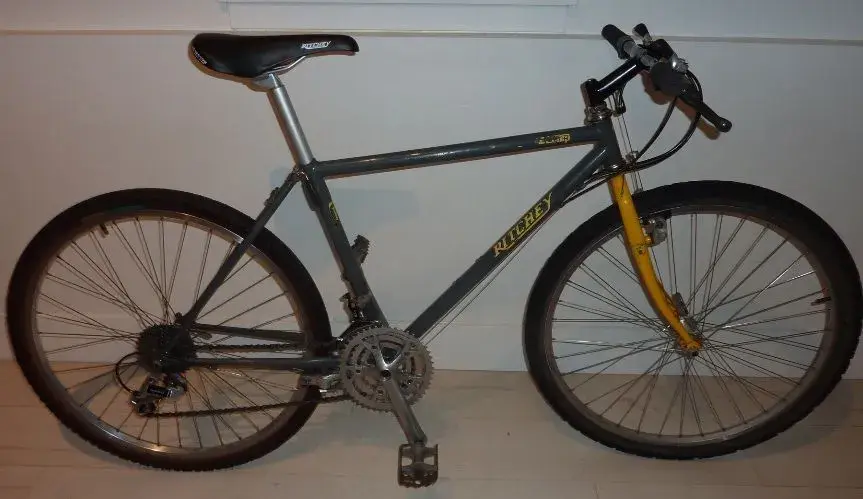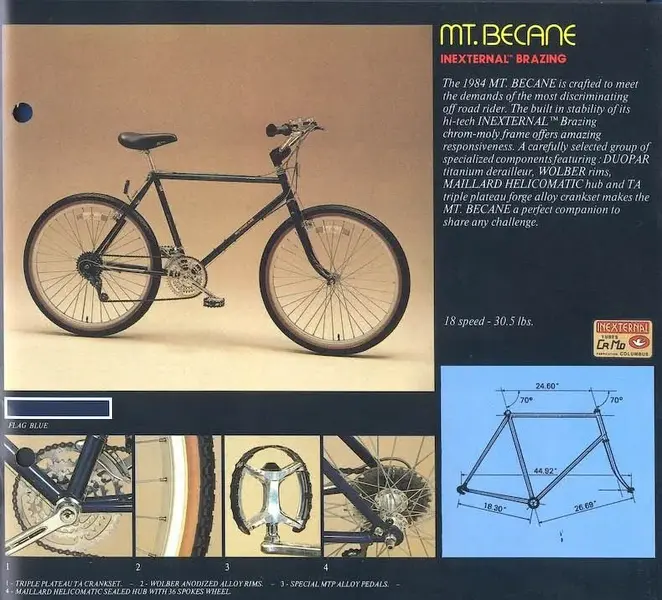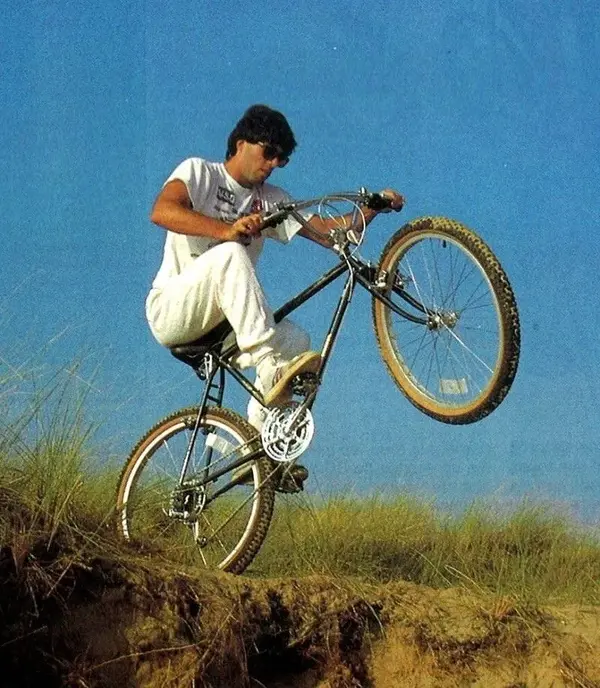- Feedback
- View
Re: Re:
On page nine of "The OffRoad Bicycle Book" by Tom Bogdanowicz, first published in 1987 it says: "A few frame builders experimented with mountain bike designs. Roberts Cycles built a frame in 1981 to the specification of an American customer...."
Whilst much more recently an article on the history of Roberts Cycles that was initially published in the Veteran Cycle Club magazine in 2015 it was subsequently uploaded and updated by Tom Bogdanowicz onto the London Cycling Campaign's website.
https://lcc.org.uk/articles/roberts-cycles
About halfway through the article it says:
"At Roberts the 1980s MTB initiative came from Jake Heilbron14, the manager of West Point Cycles in Vancouver and co- founder of Canada’s Rocky Mountain Bikes (where Derek Bailey of Roberts Cycles turned up), and Kona cycles. Heilbron was familiar with the heavyweight mountain bikes being used in California but wanted something lighter and sprightlier so he shipped a Californian style frame to Roberts, whom he knew through Cycle Imports of Maine, and asked them to make something similar. Chas recalls the challenge of setting up for wheels of a different dimension:– 26″ US cruiser wheels and tyres, as used on the converted Schwinns that served as the pre-mountainbike ‘clunkers’ in the mid-1970s. To deliver a lighter frame than then in use in California, Roberts opted for tandem tubing to ensure durability in off-road use. The frames were well received across the pond and Roberts made several for the US and Canadian markets."
Towards the end of the article is says:
"Roberts had built the first mountain bike in the UK..."
However, in reality they seem to have only made a frame, not a complete bike. Also, there was another UK frame-builder making mountain bike frames in 1981, Tony Oliver. But because we don't have specific dates from either frame-builder, we cannot say with any certainty, who was first.
Sometimes, in order to make sense of the evidence you need to combine different sources of information.GrahamJohnWallace":39959cti said:I am pretty certain there is a link between Rocky Mountain and one of the first mountain bike frames to be made in Britain. I will check this out and report back.
On page nine of "The OffRoad Bicycle Book" by Tom Bogdanowicz, first published in 1987 it says: "A few frame builders experimented with mountain bike designs. Roberts Cycles built a frame in 1981 to the specification of an American customer...."
Whilst much more recently an article on the history of Roberts Cycles that was initially published in the Veteran Cycle Club magazine in 2015 it was subsequently uploaded and updated by Tom Bogdanowicz onto the London Cycling Campaign's website.
https://lcc.org.uk/articles/roberts-cycles
About halfway through the article it says:
"At Roberts the 1980s MTB initiative came from Jake Heilbron14, the manager of West Point Cycles in Vancouver and co- founder of Canada’s Rocky Mountain Bikes (where Derek Bailey of Roberts Cycles turned up), and Kona cycles. Heilbron was familiar with the heavyweight mountain bikes being used in California but wanted something lighter and sprightlier so he shipped a Californian style frame to Roberts, whom he knew through Cycle Imports of Maine, and asked them to make something similar. Chas recalls the challenge of setting up for wheels of a different dimension:– 26″ US cruiser wheels and tyres, as used on the converted Schwinns that served as the pre-mountainbike ‘clunkers’ in the mid-1970s. To deliver a lighter frame than then in use in California, Roberts opted for tandem tubing to ensure durability in off-road use. The frames were well received across the pond and Roberts made several for the US and Canadian markets."
Towards the end of the article is says:
"Roberts had built the first mountain bike in the UK..."
However, in reality they seem to have only made a frame, not a complete bike. Also, there was another UK frame-builder making mountain bike frames in 1981, Tony Oliver. But because we don't have specific dates from either frame-builder, we cannot say with any certainty, who was first.


